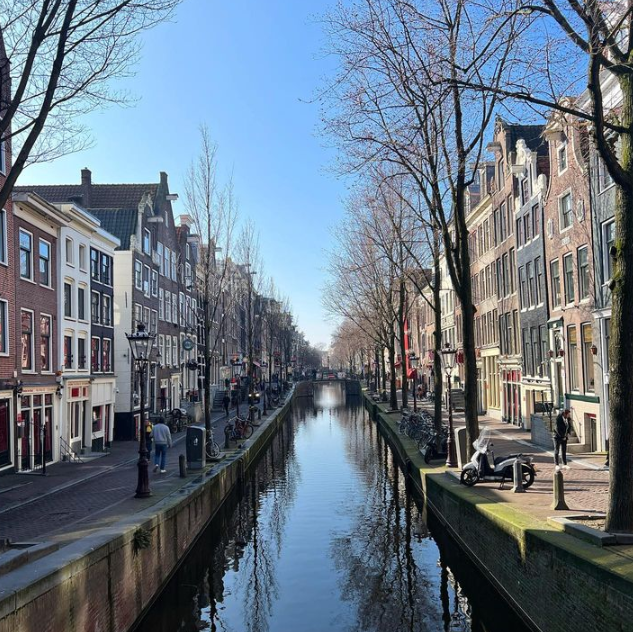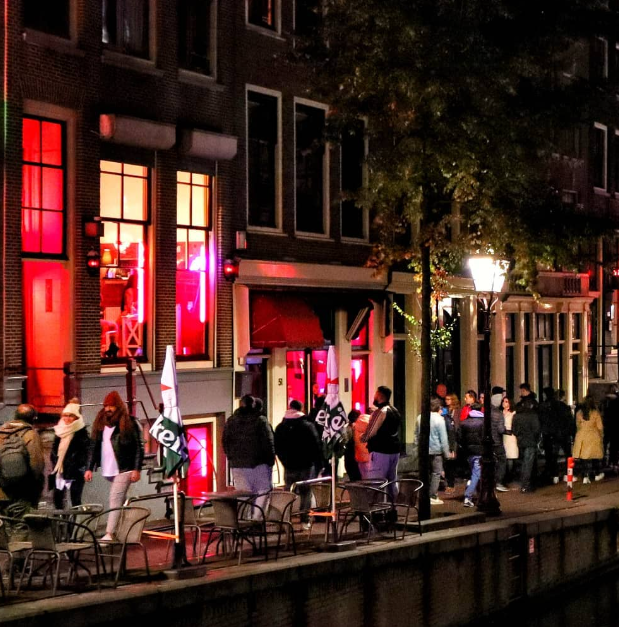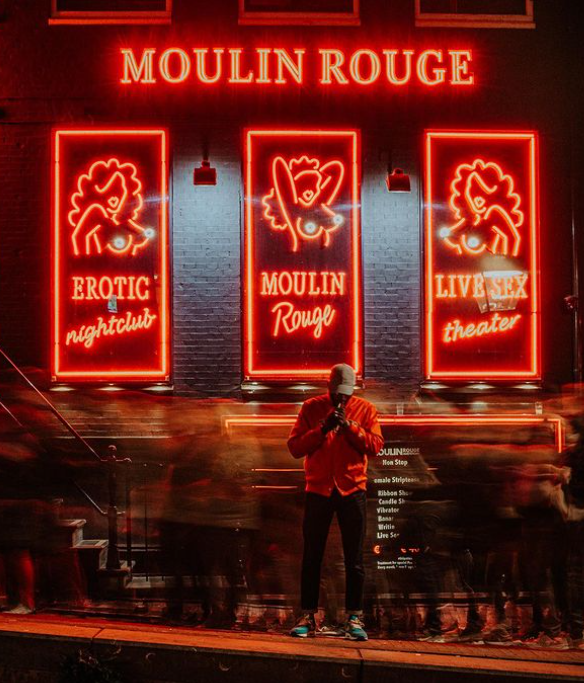
The Walletjes in Amsterdam: A Complete Guide
Are you planning a trip to Amsterdam and curious about the infamous Walletjes? Look no further as this guide will provide you with everything you need to know about the Walletjes in Amsterdam.
Introduction
The Walletjes, also known as De Wallen, is Amsterdam’s infamous red-light district. It’s located in the heart of the city and is one of the main tourist attractions in Amsterdam. The area is well-known for its prostitution, sex shops, and coffee shops. However, there is more to the Walletjes than just its notorious reputation.

What to Expect in the Walletjes in Amsterdam
The Walletjes in Amsterdam is a vibrant and lively area, attracting many tourists from all over the world. The district is divided into several smaller streets, each with its own unique charm. The streets are lined with red-lit windows, which are a tell-tale sign of the district’s reputation. However, there is much more to the Walletjes than just prostitution. You will also find bars, coffee shops, restaurants, and nightclubs.
If you plan to visit the Walletjes, expect to see a lot of people walking around. It’s a popular destination for tourists, and the area can get crowded, especially on weekends. You’ll see people from all walks of life, including locals, tourists, and even families.
How to Get to the Walletjes in Amsterdam
Getting to the Walletjes in Amsterdam is easy. The area is located in the city center, making it easily accessible by foot, bicycle, or public transport. If you’re staying in the city center, you can easily walk to the Walletjes.
The closest metro stations to the Walletjes are Nieuwmarkt and Centraal Station. From there, it’s just a short walk to the district. If you prefer to cycle, there are many bike rental companies in Amsterdam, and renting a bike is a popular way to explore the city.
The Walletjes in Amsterdam: A Complete Guide
The History of the Walletjes in Amsterdam
The Walletjes has a long and fascinating history. The area has been a hub for trade and commerce since the 14th century. During the 16th century, the Walletjes became a popular destination for sailors, who were looking for some fun and entertainment after months at sea.
Prostitution became legal in the Netherlands in 1810, and the Walletjes became a designated red-light district in the early 20th century. The area has seen many changes over the years, including a crackdown on organized crime in the 1990s.
The Legalization of Prostitution in Amsterdam
Prostitution is legal in the Netherlands, and it’s heavily regulated by the government. Sex workers in Amsterdam are required to have a license, and they undergo regular health checks to ensure they’re not carrying any sexually transmitted diseases.
The legalization of prostitution in Amsterdam has led to better working conditions for sex workers, and it’s seen as a way to reduce the harm and exploitation of vulnerable individuals. However, there is still a lot of debate around the legalization of prostitution, and there are concerns about the exploitation of sex workers and human trafficking.

Safety Tips in the Walletjes in Amsterdam
While the Walletjes in Amsterdam is generally safe, it’s important to take some precautions to ensure your safety. Here are some safety tips to keep in mind:
- Avoid walking alone at night, especially in the quieter areas of the district.
- Be aware of pickpockets and keep your valuables in a secure place.
- Don’t take pictures of the sex workers, as it’s considered disrespectful and can lead to confrontations.
- If you’re approached by a sex worker, be respectful and decline politely if you’re not interested.
- If you’re visiting a coffee shop, be aware of your limits and don’t overdo it with the drugs.
Cultural Significance of the Walletjes in Amsterdam
The Walletjes in Amsterdam is more than just a red-light district; it has a significant cultural importance to the city. The area is home to many historical buildings and landmarks, including the Oude Kerk (Old Church), which dates back to the 14th century.
The district is also home to many art galleries and museums, including the Museum of Prostitution, which offers an insight into the world of prostitution in Amsterdam. The Walletjes is a unique area, and it’s important to understand its cultural significance and not just focus on its notorious reputation.
Shopping in the Walletjes in Amsterdam
The Walletjes is home to many shops and stores, ranging from sex shops to souvenir shops. If you’re looking for a unique souvenir, you’ll find plenty of options in the district. However, be prepared for some adult-themed items, as the district is known for its sex shops.
Eating in the Walletjes in Amsterdam
There are plenty of options for food and drink in the Walletjes. The district is home to many restaurants and bars, ranging from traditional Dutch cuisine to international cuisine. You’ll also find many coffee shops in the area, where you can sample some of Amsterdam’s famous weed and relax with a coffee or tea.
in Amsterdam has led to better working conditions for sex workers, and it’s seen as a way to reduce the harm and exploitation of vulnerable individuals. However, there is still a lot of debate around the legalization of prostitution, and there are concerns about the exploitation of sex workers and human trafficking.
Safety Tips in the Walletjes in Amsterdam
While the Walletjes in Amsterdam is generally safe, it’s important to take some precautions to ensure your safety. Here are some safety tips to keep in mind:
- Avoid walking alone at night, especially in the quieter areas of the district.
- Be aware of pickpockets and keep your valuables in a secure place.
- Don’t take pictures of the sex workers, as it’s considered disrespectful and can lead to confrontations.
- If you’re approached by a sex worker, be respectful and decline politely if you’re not interested.
- If you’re visiting a coffee shop, be aware of your limits and don’t overdo it with the drugs.
Cultural Significance of the Walletjes in Amsterdam
The Walletjes in Amsterdam is more than just a red-light district; it has a significant cultural importance to the city. The area is home to many historical buildings and landmarks, including the Oude Kerk (Old Church), which dates back to the 14th century.
The district is also home to many art galleries and museums, including the Museum of Prostitution, which offers an insight into the world of prostitution in Amsterdam. The Walletjes is a unique area, and it’s important to understand its cultural significance and not just focus on its notorious reputation.
Shopping in the Walletjes in Amsterdam
The Walletjes is home to many shops and stores, ranging from sex shops to souvenir shops. If you’re looking for a unique souvenir, you’ll find plenty of options in the district. However, be prepared for some adult-themed items, as the district is known for its sex shops.
Eating in the Walletjes in Amsterdam
There are plenty of options for food and drink in the Walletjes. The district is home to many restaurants and bars, ranging from traditional Dutch cuisine to international cuisine. You’ll also find many coffee shops in the area, where you can sample some of Amsterdam’s famous weed and relax with a coffee or tea.
Things to Do in the Walletjes in Amsterdam
If you’re visiting the Walletjes, there are plenty of things to see and do in the area. Here are some suggestions:
- Visit the Oude Kerk (Old Church), a historic church dating back to the 14th century.
- Explore the Museum of Prostitution, which offers an insight into the world of prostitution in Amsterdam.
- Visit the many art galleries and museums in the area.
- Take a canal tour of Amsterdam and see the city from a different perspective.
- Visit one of the many coffee shops in the area and relax with a coffee or tea.
The Walletjes in Amsterdam: A Complete Guide
